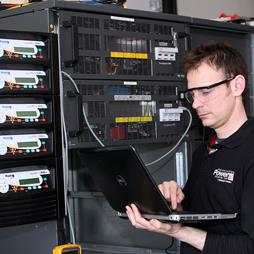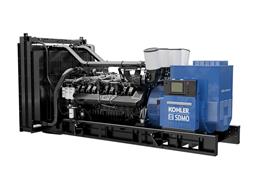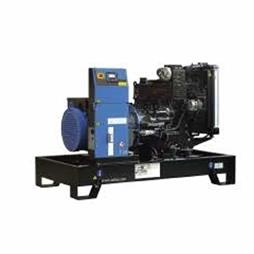The features that UPS users need most – and how suppliers are providing them
14-10-2014
Computer hardware has evolved from a useful productivity aid to an online ICT resource essential to most organisations survival. The role of Uninterruptible Power Supplies (UPSs) has accordingly become critical in protecting this resource from mains power interruptions. Yet even while UPSs assume this increased responsibility, their users need them to do so more reliably and more efficiently than ever before. Uninterruptible Power Supplies Ltds recent survey investigated exactly which power issues concern data centre operators the most, and how they expect their UPS suppliers to respond. A look at the survey results and respondents priorities, and the UPS industrys answers, offers pointers for achieving future-proofed UPS configurations best suited to todays business and technical pressures.
Reliability is absolutely key because while critical loads have rapidly grown, mains power has become less reliable. Over 75% of the survey respondents reported a power outage within the last 12 months, while 78% believe the situation will worsen over the next ten years. This belief has foundation, as 19 GW of generating capacity will go by 2018, leading to power rationing or blackout risk.
Rising energy costs are another major concern to 80% of respondents, and reduction of carbon footprint is also a growing priority as environmental legislation becomes punitive to non-compliant organisations. The survey shows that currently 63% regard cost as their driver to reduce power consumption, while 27% are driven by carbon footprint reduction. Users purchases of capital equipment are affected; 82% of respondents regard energy efficiency as a key buying consideration. Nearly 54% report that modern UPS systems, designed and manufactured with environmental considerations at their core, have significantly improved power consumption and cooling issues within their organisation.
Transformerless technology drives modern UPS design. It immediately improves energy efficiency by around 5% across the UPSs whole load span, substantially reducing energy and cooling costs. Transformerless UPSs also present a higher and more stable input power factor, which reduces input current and sometimes electricity costs.
Transformerless implementations also offer significantly reduced size and weight. This has enormous implications for power protection, because UPS systems can become sets of rack-mounting modules operating in parallel rather than monolithic floor standing units. Such configurations improve reliability through improved resilience to failure and improved availability.
Resilience to failure is a property of N+1 redundant systems where the UPS can fully support the critical load even if one module fails. UPS availability increases because a faulty module can be quickly replaced, typically within about half an hour, compared with the six hours typically needed for component level diagnosis and repair. Additionally, battery reliability is improved through better charging circuitry.
Although these hardware improvements are welcome, they are not the whole story. Over 90% of the surveys respondents believe that maintenance and emergency call out services are as important as the hardware itself to their business. Accordingly, users should arrange a support package comprising both scheduled maintenance and assured emergency response. Scheduled maintenance minimizes the need for emergency callouts by spotting deteriorating components for replacement before failure. As a complete power protection installation often extends to a UPS, batteries and generator, it makes sense to use a single supplier who understands all of these, how they interact with one another and therefore how to provide an integrated power support strategy. An emergency callout service appropriate to the loads criticality should be negotiated. Guaranteed on-site response times should be set, backed by 24/7 telephone support.






